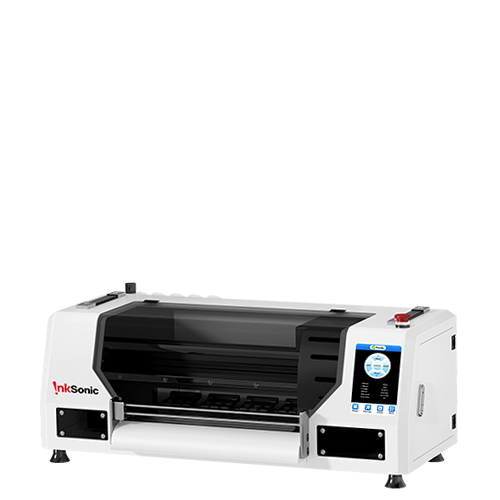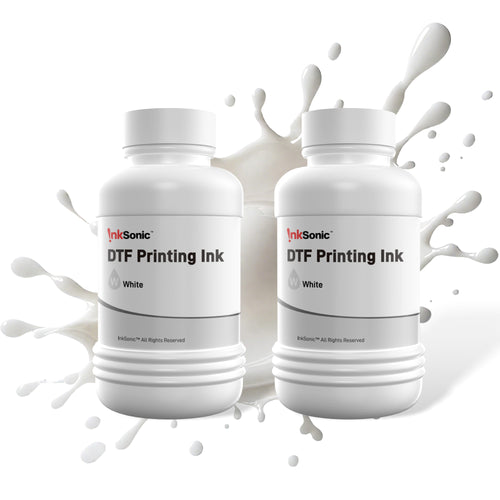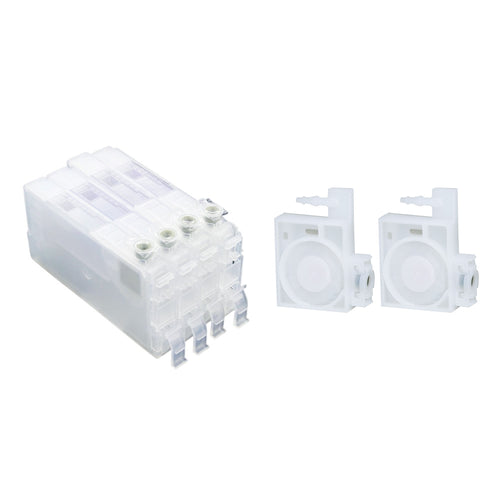In the modern day rapid digital printing market, quality and speed are the two parameters that are crucial in reflecting printer performance. For efficiency-enhancing factories or studios, understanding how to scientifically control the speed of a printer is the key to boosting competitiveness. This article provides an in-depth explanation to controlling speed by examining hardware settings, software parameters, print mode, and working experience.
Five Major Factors Affecting DTF Printing Speed
1. How Printhead Affect Your DTF Printing Speed

The printhead is the most important to determine DTF printing speed. The more nozzles a printhead has, the more ink it can discharge in a single second, and therefore the faster the print. Common printheads are XP600, L1800, and i3200. XP600 < L1800 < i3200 in base speed. However, actual speed performance also depends on the entire system, e.g., transmission speed, motherboard, etc.
Typically, XP600 provides higher stable performance and higher long-term efficiency, followed by L1800 and i3200. For slightly much higher speed, switch to dual-head or four-head models.
2. How to Adjust DTF Printing Settings for Better Speed

Different RIP software contributes significantly to printing speed. Uni/bidirectional printing, feathering, and white ink coverage settings all impact spraying efficiency and overall speed.
- Lower feathering makes edges rougher but prints faster. Higher feathering makes the image more precise,
- Unidirectional printing is slower but more precise.
- Bidirectional printing is quicker but requires more mechanical stability.
- A proper white ink underbase ratio can also speed up printing.
Some software programs also offer speed settings such as low, medium, and high, which can be selected based on production needs.
3. Does Higher DPI Mean Better DTF Printing Results


DPI (dots per inch) determines the image sharpness. Higher resolution means more ink dots densely packed and longer print duration.
- 720×720 DPI: Most orders; good speed and quality.
- 1440×720 DPI and above: High quality but slower.
720×720 DPI optimized pass settings are to be used for mass production.
4. Which Pass Count Gives the Best DTF Printing Results
Pass is the number of how many times the printhead passes over the material. More passes mean more image depth and saturation, but slower printing.
- 4PASS: Maximum speed, good for simple designs.
- 6PASS: Balanced, good for medium complexity.
- 8PASS: Highest quality, for marketing and premium custom orders. And some printers with 12 Pass, like Inksonic C13.
To enhance speed, use 4PASS/6PASS and maximize feathering for improved edge quality.
5. Should You Use Uni or Bi-Directional Printing for DTF
- Unidirectional: Prints only in one direction; more accurate but slower.
- Bidirectional: Prints in two directions; doubles the speed but needs to be mechanically better aligned.
For giant batch orders, bidirectional mode is typically preferred.
Boost Print Speed Step-by-Step Instructions
Step 1: Open Your Printing Software
Design your art using design tools like Photoshop or Illustrator, and then open it in the Inksonic layout tool and click on "Print" to enter the settings panel.
Step 2: Set DPI and Pass Count
Choose the right DPI (e.g., 720×720) and number of passes (e.g., 4PASS, 6PASS, 8PASS).
Step 3: Choose a Print Mode
Under the "Print Speed" settings panel, choose:
- Low
- Medium
- High
Choose based on pattern complexity and production demands.
Step 4: Feathering and Print Direction Tuning
- Reduce feathering level = higher speed
- Enable bidirectional printing to gain speed
Step 5: Test Print and Save
Apply your settings, perform a test print, and check image definition, color accuracy, and transfer quality.
Pro Tips for Faster DTF Printing
1. Save Print Templates
For recurring orders, save optimal settings as a template (e.g., "White_T_6PASS_Bidirectional_Feathering2") for easy reproducibility.
2. Batch Orders by Material and Design
Arrange groups by fabric type and color complexity to minimize setting changes and allow greater throughput.
3. Smart Equipment Scheduling
Schedule high-precision prints for late shifts and reserve daytime for speed-priority jobs. Assign dual-head machines to best-selling bulk orders.
4. Scheduled Maintenance to Maximize Uptime
Dormant printheads cause nozzle clogging or misfiring, reducing speed and print quality. Clean heads regularly and check ink supply, sensors, and feeding systems. You could explore the blog: Do All DTF Printers Need Daily Maintenance?
Pro Tip for Faster Printing Without Sacrificing Quality
Sometimes it’s not just about the hardware—it’s about the workflow. Using high-quality transfer film, reliable curing equipment, and the right adhesive powder can make a huge difference in speed and consistency. Pair that with smart software settings, and you’ll notice smoother production runs and fewer interruptions, even on complex designs.
Boost Efficiency with Smarter Settings
Small tweaks—like adjusting ink saturation, curing times, or transfer film handling—can shave minutes off production without compromising on detail. The right balance ensures vibrant colors and smooth gradients while keeping your workflow fast and consistent.
Streamline Your Process
Think beyond the machine itself: pre-heating garments, storing powders correctly, and organizing your workspace can reduce downtime. A clean, efficient setup means fewer errors, faster turnaround, and better results with every press.
Maintain Speed and Quality Together
High-resolution artwork, optimized color profiles, and dependable curing equipment work hand in hand to speed up output. With the right combination of materials and process adjustments, you can scale production while keeping prints crisp and durable.
Conclusion
The ideal DTF print speed is an overall process involving hardware selection, software setup, and usage behavior. Through DPI, pass count, print direction, and feathering adjustments, you can significantly improve production efficiency at the expense of no quality loss.
When equipment gets smart, regulating speed and quality will be a matter of ease. To differentiate yourself in the cutthroat DTF industry, begin with print speed optimization—open the door to efficiency and greatness.

































